PART TWO: 3
The History of Country Music 1990-2012
- From Lifestyle Events to Music Experiences: The Evolution of British Country Music Festivals
- From Boyzone to Westlife: The Irish Influence on UK Country Music Charts
- TV Talent Shows Fail to Impact UK Country Music as Line Dancing Craze Surges
- Nashville TV Show: Reviving UK’s Love for Country Music
- Urban Cowboys: Exploring the Impact of Nashville
- Behind the Hits: The Changing Landscape of UK Record Company Boardrooms
- Branding Country Music: The Maverick Magazine Story and the Rise of CMT in the UK
- A Conversation with Duncan Warwick, Editor of Country Music People
UK Country Music 1990-2012
1990-2012 saw major developments in British Country Music with hybrid music lifestyle festivals emerging. Mainstream Irish artists achieved chart success, and the television series “Nashville” revived the UK’s love for country music. Whilst music city artists started to impact the UK chart, the changing boardrooms of the UK record industry resulted in reduced support for local artists. BBC Radio 2, CMT and Maverick Magazine helped to rebrand and promote the genre allowing USA acts, such as The Chicks & Garth Brooks, to grow audiences and tour the UK and Europe.
From Lifestyle Events to Music Experiences: The Evolution of British Country Music Festivals
It would take three decades for the CMA to gain control of exporting country music to a UK crowd, but other festivals existed before C2C and after the demise of the Wembley Festival. Indeed, Independent writer Stephen Walsh stumbled upon one to distract himself from a weekend without his kids. A fan of Austin musician Jimmie Dale Gilmore, Stephen paid £10 to enter Castle Donington’s Americana festival in 1995. He found the park ‘crawling with cowboys’ and ‘women in saloon-girl red taffeta’.
In his book Heartache Spoken Here, Walsh beholds ‘an irredeemably British, comprehensively tawdry landscape’. The event is described as a lifestyle event, ‘what country music festivals become when they’re struggling for audiences’. The crowd’s makeup was split between those who wanted to hear music and those who had motorhomes, motorbikes, or motorcars. The motors preceded the music in the afternoon, given that Donington was home to a racetrack, perfect for ‘an eternally young wild bunch’.
As at Wembley in the 1970s, the music is a curate’s egg. ‘The British acts playing cover versions seemed unlikely to have the clout’ to make Americana ’95 a proper music festival rather than a lifestyle event. The girl serving meat at the Grill was unsurprised that cowboys and veggie burgers didn’t go together; as we learn in the book, cowboys and divorce very much do. Perhaps country clubs are the natural meeting spot for people who want to risk love again.
Over Independence Day Weekend in July 2022, the festival returned, this time to Bath’s American Museum and Gardens at Claverton Manor. Tickets were £95 for the three days or £75 for Saturday and Sunday. The classic cars were back, as was the music, put together by Matt Owens and including the cream of the UK Americana crop: Robert Vincent: Katy Hurt, The Magic Numbers and at least 25 more acts.
There was comedy on Friday night headlined by Georgia-born Reginald D Hunter, and families were well catered for, with a scavenger hunt, comedy beatbox show and play area. As with The Long Road, culinary arts were present, making it as much a lifestyle festival as a music festival.
Walsh’s book was published in 1997 when young girls like Fearne Cotton were dragged to line-dancing sessions, and compilation CDs were selling well. It transpires that an American couple, Dick and Geneva, brought line-dancing to the UK and set up shop in Pontins down in Devon.
Happily, Walsh mentions the famous Fort San Antone near Preston with its ‘six country concerts a week’ and the stuffed head of a buffalo in the dining room, which is covered in images of country stars. Flyers advertising the place boast that it is a little piece of America that has been in your dreams since childhood. There’s horse-riding, coarse-fishing and a Western store which Wayne Hadlow keeps up to this day.
There are also monthly country nights at Butlins in Ayr, and musicians entertain the drinkers at the Bowler’s pub in Glasgow, decorated with a mural of stars like Hank and Johnny. Up in Elgin, at an indoor festival held the same weekend as Millport, Walsh mentions how country crowds ‘like only what they like, and they’re not generally there to listen to new stuff’. This includes original compositions, as Alan Cackett often laments.
There are a host of performers Walsh hears about along the way. Essex has a few acts, such as the sibling duo The Mitchells and the matinee idol Dane Stevens. The durable Sarah Jory was also part of the circuit. Walsh suggests that country club attendees might transform themselves into somebody else, separate from their persona at work or home.
Barry Johns, the Singing Hammer, plays the pubs of Hull to an audience including 20 close friends who, at one point wave electric candles as he plays Old Flames. One trucker has a picture of Bradford’s Haley Sisters in his cab. Down in Cornwall, Walsh meets the bassist in Jess Owen’s band. Jess played country in the sixties and was the father of actor Clive. He left the family home when his son was three.
Walsh also discusses Spirit of the West in Cornwall, formerly Frontier City, based in Hungerford. Made up of two towns named Fort Smith and Silver City, it closed in 2009 and was a heap of rust ten years later.
From Boyzone to Westlife: The Irish Influence on UK Country Music Charts
It remains part of popular music history that one of the men who brought country music to the UK charts in the 1990s and 2000s also sat on the judging panel of a primetime talent show. Like thousands of contemporaries, Louis Walsh was an Irishman who loved what was coming out of Nashville. He needed songs for his clients, the vocal harmony groups Boyzone and Westlife, plus solo star Ronan Keating.
Having already pilfered the songbooks of Cat Stevens (Father and Son), Bee Gees (Words), The Osmonds (Love Me For A Reason), Billy Ocean (When The Going Gets Tough) and Tracy Chapman (Baby Can I Hold You), Walsh turned to hits by country stars. You Needed Me was resurrected and hit number one for Boyzone in 1999 before Ronan went solo with a combination of pop standards (Lovin’ Each Day and Life is a Rollercoaster) and country numbers. When You Say Nothing At All brought the Keith Whitley standard written by Paul Overstreet and Don Schlitz to the top of the UK charts via its placement on the Notting Hill soundtrack.
In This Life, a number one country smash for Collin Raye in 1992, was marvellously chosen as part of a 3-inch single/mp3 download giveaway with Pepsi exclusive to Tesco. Louis Walsh made Westlife record the song after they had already laid down versions of Sara Evans No Place That Far and Lost In You, which became Garth Brooks’ only Hot 100 entry of the 1990s when he released it as Chris Gaines. We can also count Desperado, the Eagle’s track, which sat beside In This Life on their album Face To Face. See the UK Country Chart
Westlife’s 2006 release, The Love Album, found room for The Dance and Love Can Build A Bridge alongside ballads The Rose, Easy, and You Light Up My Life, proving that country music was an Adult Contemporary genre when it wanted to be. Witness Michael Bublé’s modern standard Home becoming a hit for Blake Shelton in the US and Westlife in the UK; alas, the Irish quartet has preferred to enlist Ed Sheeran rather than Thomas Rhett or Hillary Lindsey on recent Radio 2-friendly albums.
Ronan also tipped his imaginary cowboy hat to Garth Brooks with a chart-topping version of If Tomorrow Never Comes and Bob Seger’s We’ve Got Tonight, which Kenny Rogers had also covered. Kenny’s hit She Believes In Me was also given the Keating treatment, as was I Hope You Dance, the Lee Ann Womack wedding song. Kenny, who, like Jim Reeves before him, straddled Easy Listening and Country, topped the UK charts twice with Lucille (1977) and Coward of the County (1980), with three other top 10s including the Dolly duet, Something’s Burning, and Ruby Don’t Take Your Love To Town.
As for US acts of the time penetrating the top of the charts, Lonestar did well with Amazed, the first song to come out of Nashville and get to number one on the Hot 100 since Islands in the Stream. It reached number 21 in the UK but was steadily streamed over the next two decades and was certified platinum in 2019. Duncan James, aka Duncan from Blue, recorded a version on his debut album from 2007; its UK release was aborted, but it came out in Germany (the country where Blue performed when they reformed for the 2011 Eurovision Song Contest). Tim McGraw sang the hook on Nelly’s number one Over and Over, while Shania Twain rode off into the sunset with a slew of hits from Come On Over.
It should also be noted that Steps’ first single was 5-6-7-8, a load of tosh with a rap from Lee Latchford-Evans, who grew up in Elton John’s home village of Pinner. Louis Walsh’s fellow Svengali Pete Waterman had put the quintet together purely to release that song and capitalise on the popularity of line dancing. It went so well that 25 years on, the band are still filling arenas, and they dispense with their first hit early on in their set. It peaked at 14 on the UK charts but was number one in Australia and number two in New Zealand; even Sweden liked it enough to send it into their top 20.
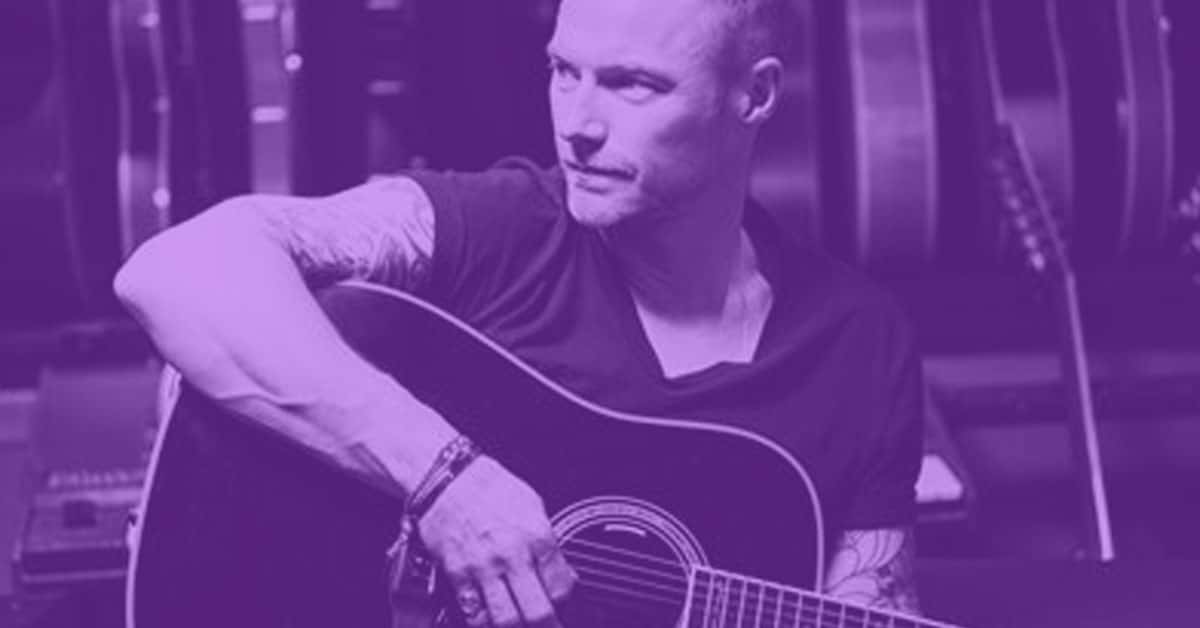
Ronan Keating, the lead singer of Irish pop group Boyzone, has found success as a solo artist in the country music genre. His rendition of “When You Say Nothing At All,” written by Paul Overstreet and Don Schlitz, reached number one in the UK, Ireland, and New Zealand, earning a double platinum certification in the UK. In 2002, his release of “If Tomorrow Never Comes,” originally by Garth Brooks, topped the charts in the UK and three other countries, while also achieving top-five status in several additional territories. Keating’s upcoming album, Twenty, features a country-pop track titled “Love Will Remain,” which includes a collaboration with Australian actress and singer Clare Bowen, known for her role in the TV series Nashville.
TV Talent Shows Fail to Impact UK Country Music as Line Dancing Craze Surges
The many TV talent shows that plagued UK television in the 2000s did not create any country stars. American Idol champion Carrie Underwood has never had a hit in the UK, perhaps because she would get in the way of Syco successes like Leona Lewis and One Direction. Even though Louis Walsh was on the panel, it was Simon Cowell’s show; Walsh has likened their roles to pantomime villains.
Laura Oakes competed on The Voice in 2013, auditioning with the Florence Welch song Spectrum. Cheered on by most of her family, she delivered an assured performance which convinced Danny from The Script to turn his chair around, as per the show’s gimmick. Laura’s battle performance was to Emeli Sande’s Heaven, and it remains weird to hear Laura sing and dance to pop songs when she is so associated with the UK country. Andrea Begley, the niece of Northern Irish Queen of Country Philomena, won that season.
Remember Monday is a country trio that competed on The Voice in 2019, auditioning with Kiss From A Rose by Seal. Impressively they went with an original song for the next round, Jailbreaker, but exited the competition before the final stage. ITV, which aired The Voice, were indirectly responsible for one country hit in the UK: Hillbilly Rock Hillbilly Roll, a song by a trio of Emmerdale actors under the name The Woolpackers. It charted at number five in November 1996 and was part of the album Emmer Dance, which sold 100,000 copies! Line Dance Party, the little-known follow-up, was another big seller a year later.
Like Alan Cackett, Lee Williams saw good and bad in the craze. The Woolpackers were ‘just a joke! It never lasts long, but line dancing is still massive in Europe and here. I know a couple of teachers in Liverpool and Manchester who do 20 sessions a week.
‘I made a lot of money out of it at the time. I was the first person to take line dancing into arenas: the NEC in Birmingham, Wembley, also Newcastle Arena, and Manchester Arena. I managed one of the top choreographers and dance teachers at the time. We did a lot of awards and championships around Europe.’ How do you win at line dancing: wear the shiniest belt buckle.
‘Being the best doing a type of dancing, like the Watermelon Crawl. They’d have a couple of dancing. It was like ballroom dancing, with certain rules: the dress had to be not too short or long, and they had to wear boots. That went well until some clever dance teachers brought pop music into it and killed it.’
For country performers, the dancing craze has become a mania for seeing them perform in large venues, with Radio 2 playlisting country music for daytime audiences. This was a balm for Kacey Musgraves and Maren Morris, who have both starred at Country2Country and played their shows at the Royal Albert Hall.
Nashville TV Show: Reviving UK’s Love for Country Music
The most remarkable event to fill the O2 Arena in the 2010s was a group of actors who played the parts of country performers on a TV show. When Nashville launched in October 2012, fans of the show recognised plenty of the actors – Connie Britton, Charles ‘Chip’ Esten, Hayden Panettiere, Chris Carmack – but were impressed enough to spend money hearing songs from the TV series.
Chip, now Charles, and Esten even put out a song every Friday for a year. Having played C2C in 2016 and having been part of the Nashville show in the 2010s, he was due to play the main stage at C2C 2020, stepping out from the shadow of his character Deacon Claybourne. He told Think Country in 2020 that he ‘didn’t hear much about country music’ when he lived in London as a young actor in the early 1990s.
Esten was playing Buddy Holly, a Texan who ‘was expected to play country music, but he ended up playing this other thing called rock’n’roll’. In the 2010s, he says: ‘I’m not sure how far [Buddy’s music] differentiates it from a lot of the country music now.’
Esten’s co-star Sam Palladio, who played Gunnar, even fell in love with a country star, Cassadee Pope, and opened for acts like Ron Sexsmith while on the show. Having signed a management deal in 2022, we may see him onstage more in the coming years, perhaps on the same bill as his old TV flame Clare Bowen, who performs with her husband Brandon in the duo Bowen Young. Esten and Palladio plugged the 2016 Nashville show on BBC Breakfast. Charlie Stayt expressed surprise that a drama built around country music’ hadn’t existed before, while Palladio talked about his journey from Penzance to Nashville. ‘When I auditioned for the role [of Gunnar], the character was from Texas,’ he admitted.
In 2018, when the TV show was coming to an end, Palladio spoke to Entertainment Focus. Pip Ellwood-Hughes asked him whether the appreciation from UK fans had surprised him.
‘To be honest, yeah, it did. Channel 4 picked it up…It was a bit of a bridge for the genre to take off here.’ The live shows began in Chicago in front of no more than 800 people and went first to the Royal Albert Hall and then to the O2 Arena. Sam was spotted supporting his good friend and former flatmate AJ Dean from The Wandering Hearts at a festival in 2022, a favour AJ may return as Sam finds his feet as a performer in 2023.
It was only in 2018 that British Airways launched a direct flight from London to Nashville – ‘typical!’ agreed Palladio at the poor timing for his job – initially at 15.45 five days a week. USA Today, he announced that it was the first time since 1994 that service had run from one city to the next.

Sam Palladio, a talented English actor and singer-songwriter, gained recognition for his portrayal of Gunnar Scott in the highly successful country music drama Nashville. Apart from his role on the show, he has also ventured into music collaborations. One notable collaboration was with Irish singer Una Healy, formerly of the girl group The Saturdays, on a song for her debut solo album. Additionally, Palladio has released a total of 12 singles from the Nashville soundtrack, frequently collaborating with his co-star Clare Bowen. His musical talents have led him to perform at prestigious events like the C2C festival and Nashville meets London.
Urban Cowboys: Exploring the Impact of Nashville
I asked Alan Cackett and Lee Williams why it took over two decades for C2C to launch after the International Festival ended. From Alan: ‘That’s a question I wish I could answer. In the seventies, country acts were regularly getting into our pop charts. That changed from the mid-80s onwards.’ From Lee: ‘The popularity disappeared. The Wembley thing was good for what it was. It just quietened down. I don’t know why.’
It may have something to do with the self-imposed insularity of Nashville itself. Garth Brooks only had a Billboard Hot 100 hit once he pretended to be a pop star called Chris Gaines. Yet country music did enjoy big-screen success in 1980.
That winter, filmgoers had the choice between the auteurs (Tinto Brass’s Caligula, Friedkin’s Cruising, Kubrick’s The Shining, Lynch’s The Elephant Man), the humorous (Caddyshack) and the musical: the Bob Fosse biopic All That Jazz, Belushi and Aykroyd as the Blues Brothers and Olivia Newton-John in Xanadu. They could also see what was effectively Saturday Night Fever in Texas: the John Travolta vehicle Urban Cowboy. Johnny Lee’s top ten Hot 100 pop hit Lookin’ For Love didn’t get a UK release.
Five years before Urban Cowboy, and 25 years before the Coen Brothers reset Homer’s Odyssey in Depression-era Mississippi, Robert Altman had released his ensemble movie Nashville. Famed American movie critic Pauline Kael trailed it as ‘the funniest epic vision of America’. One of the characters was Opie, a reporter supposedly from the BBC whom Geraldine Chaplin played. According to a piece in Sight & Sound magazine to accompany a reissue of the movie, which is now on the BFI website, Geoff Andrew wrote that the character was ‘forever interpreting whatever she sees and hears with a pretentious blend of prejudice, idiocy and ignorance’.
The acoustic singer/songwriter ballad I’m Easy, sung by Keith Carradine in the role of Tom Frank, won the Best Original Song Academy Award. I need not tell you that it didn’t chart here, but I will mention that it was never sent to country radio in the States; it got to number 17 on Billboard and number 10 on the alternative Cashbox chart and topped what was then known as the Easy Listening chart, which became the Adult Contemporary chart which Faith Hill topped in 2000 with her song Breathe.
That song got to a miserable 33 in the UK, following This Kiss (number 13 in 1998) and preceding The Way You Love Me (number 13 in 2000) and There You’ll Be. That last ballad from the movie Pearl Harbor was a number three hit which spent ten weeks at the top of the AC chart in 2001, likely being played in the same set of songs as that spring’s number one: Lee Ann Womack’s I Hope You Dance. (That’s if country radio played songs sung by women back to back in 2001, something reportedly not done in 2023!)
Behind the Hits: The Changing Landscape of UK Record Company Boardrooms
Big names supplied Faith Hill with Breathe: Diane Warren wrote it, Trevor Horn produced it, and Beck’s dad David Campbell did the orchestrations. A remix of Breathe returned to the UK charts, peaking at 36, while Cry also got into the Top 40 (number 25 in 2022). Breathe was an 11-week AC chart-topper too, and was knocked off number one by Landslide by Dixie Chicks, which was there for seven weeks and had its run curtailed by ‘the incident’ in London that April.
One man who was following these songs up and down the charts was Alan Cackett. ‘I knew as much about the executives as I did about the people I dealt with,’ he tells me. ‘I was dealing with the press offices, but I made it my goal to understand how the music industry works.‘
Alan can thus point to a change in the boardroom which affected what was getting to UK country fans. There was a change in the people that were in the UK offices of the record companies: ‘In the early seventies, a lot of the people I knew in high-up positions liked country music; in the eighties, there was nobody in EMI, Decca, Phillips, Mercury, Universal. Unless you’ve got someone in the record company who will champion the music, it gets pushed on the back burner.’
Garth Brooks came over to the UK and Ireland in 1994 and had a UK hit with a double-A-sided single, Ain’t Going Down and The Red Strokes, which seemed to be issued to promote the gigs. ‘They saw the Garth phenomenon, but nobody in EMI London would have been responsible for his records being released in the UK. You had to have a belief, a passion for country music.’
In the 1990s, Alan also started promoting American acts like Victoria Shaw and Paul Overstreet, booking their tours and driving them to radio sessions since he now held a licence. He also wrote biographies of country stars for the BBC Music website and started assembling compilation CDs and writing liner notes for; Alan reckons, ‘almost 250 CDs’.
Branding Country Music: The Maverick Magazine Story and the Rise of CMT in the UK
Maverick Magazine was born in 2002, a fresh approach to country music’ initially conceived as the sort of glossy magazine which could sit on a coffee table. There was a live element to Maverick’s offerings, and Alan admits ‘it seems unbelievable’ that acts like Gretchen Peters and Allison Moorer would agree to play down in Kent.
‘Maverick was all about the music. I wouldn’t take any adverts for Western wear. I’m not interested in the lifestyle or the dancing. The readership of Maverick halved immediately after I left because they changed it to only really cover the last three or four years of the music.’
In the 2000s, the Strong Women Era, Martina McBride and Faith Hill came over and the Dixie Chicks. Shania Twain hit Wembley Arena in July 1999, also appearing at Capital FM’s Party in the Park in Hyde Park. Hal Ketchem and Lonestar, as did George Strait, also came to the UK. ‘He was appalled that they wanted him to ride down Oxford Street on a horse.
‘It was CMT (Country Music Television) that led to the audience. People were now finally able to see what today’s country music was about. Before that, they had been force-fed by the BBC with all the old stuff. Nationally and at all the local radio stations – I started the one on Radio Medway, the second country programme on the BBC local network – most of the presenters were my age, in their fifties so they were playing stuff from the sixties and seventies, a little bit into the eighties. Still, they were very rarely playing nineties country. The British public didn’t get to hear today’s music until CMT. The videos were well done and completely opened up a new audience.’
Lee Williams was instrumental to CMT’s presence in the UK. When the channel is brought up, he chuckles before telling his tale.
‘I was a big friend of CMT in America. When I first started on satellite radio, and we had a studio in Camberly, which Crystal Gayle opened up for us on Caron Keating’s ITV show, we struck a deal. We had a two-metre dish stuck on a roof, which they paid for, and we would relay CMT direct from Washington for 12 hours through the night as audio before launching here. Many people don’t know that!’
The UK lost CMT, says Alan Cackett, ‘because the ad agency selling the advertising had the wrong demographics for the people watching the channel. They sold it for the Geographic channel and were going for the wrong audience. They thought they were council house-type people, so they couldn’t get the big advertisers on board. The majority of viewers were professional people.’ In marketing speak, they aimed at C2DE rather than ABC1, influencing what products came in between the programmes.
‘I proved it when I launched Maverick. The covers of the early issues were iconic: there was nothing on the front telling you what was inside. The first issue was a black-and-white picture of Willie Nelson looking quite haggard. It was artistic, and the layout inside was more Sunday Telegraph than The Sun. It worked. We sold eight to ten thousand copies monthly at £2.25, 100 pages.’
Alan never operated a pay-to-feature scheme as today’s Maverick offers, where acts can contribute an advert which ensures their music gets written about by the editor. ‘That was one of the main reasons I resigned,’ Alan said.
A Conversation with Duncan Warwick, Editor of Country Music People
The present editor of Maverick’s rival publication, Country Music People, is the fearlessly outspoken Duncan Warwick. The magazine, as per Alan’s editorial stance, considers country in all its forms, be they honky-tonkers or A-Listers like Thomas Rhett. It is particularly good at featuring independent acts from the USA, Australia, and Canada.
Individual issues are priced at £5.95, with an annual subscription costing £64 in the UK, scaling up to £96 if you are an overseas subscriber. The company that owns the magazine is rather excellently called Kickin’ Cuts Ltd, with no G. Although recent back issues can be sold individually, people often sell collections or issues online. ‘Somebody phoned us up and was after £400 for every issue ever,’ Duncan tells me.
‘People phone up saying they’ve taken out a subscription and say, “I’ve just bought so-and-so’s album because you reviewed it.” I think I’m pretty in tune with the readership. By being a fan, I go with my gut. If someone’s had a history of making records I like, even if they only sold to their parents, more country fans will appreciate it if I appreciate it. There has to be a balance, which is why Thomas Rhett is in.’
Indeed, TR was on the issue’s cover, announcing the Country2Country headliners for 2023. I spoke to Duncan over the phone a few weeks after releasing that issue. Like his fellow editor Alan Cackett, he likes all kinds of music (‘reggae, old soul, ska, jazz’), but it has to be of the highest quality.
‘Deep down, I am not only a country fan but a fan of real country music. I can’t help myself; I’ve always been that way. I want the country to sound like George Strait or Hank Williams, possessing the same qualities that got me into it. If I listen to reggae, I want real reggae, like Dennis Brown and Gregory Isaacs, not UB40.’
This colours his view of country music in the UK from the 1970s to the present day. First, British acts wanted to ape Merle Haggard. Then they wanted to be Garth Brooks. Today, with The Shires a decade into their career, Brits want to be Lady A. The indisputable fact is that where America leads, Britain follows, which reminds me of that famous quotation: when America sneezes, Britain gets a cold.
Duncan Warwick is prone to wearing Western gear in his daily life. ‘I would wear jeans and cowboy boots, day in and day out, for whatever I did. I’d like to have a belt buckle of a reasonable size. You know when everything was tribal with goths or soul boys? I felt like I was making a statement about the music I liked.’
Duncan says CMT turned many people on to country music, which helped the careers of new artists like Alan Jackson. ‘They were playing things that weren’t necessarily on the charts. I remember John Brannan; he had a fantastic single I wouldn’t have known about were it not for CMT. It was like having an American radio station before the Internet. You’d see all the new releases with a promo video. It was cool.’
Landlines were the way to communicate with fellow fans, as was the old-fashioned method of hanging around in places that sold records. ‘The shops specialising in selling import CDs would be very good at creating a buzz or spreading the word,’ recalls Duncan. ‘I used to go to Record Corner in Balham, one of the bigger importers. I think they imported stuff to the UK, and they supplied other shops that would sell imported stuff. You could go in there and ask what was good. There would be a lot of other customers doing the same, and some of them would be bumping into each other in record shops.’
Of the modern media landscape, Duncan says he would have ‘killed for something’ like CMT back in the analogue era. ‘It’d be like CMT in the car. I’m a big radio fan but I think I’m too picky. I change channels if they start playing a song I don’t like. Very few radio stations can hold me for one or two songs. I can remember feeling in the late 80s and early 90s that on almost every record that came out on a major label, there would be something I liked on it—at least one track and most of it if not all.
All the same, the UK market allows American acts to keep coming back to build or connect with their fanbase: ‘Fans of real music and real music fans in the UK,’ Duncan suggests, ‘are very loyal. If somebody tries to come, especially when they are lesser known and have to play a small gig, I think they remain loyal. It’s like they are thankful that someone is bothered to come here, that an artist has made the journey.’
With US acts able to fly over to Europe, Duncan and his fellow country fans in the 1990s could sample the real deal. He wasn’t at the infamous Dixie Chicks show in 2003 (‘they didn’t do enough shuffles for my liking’), but he did attend a Hal Ketchum gig also at the Shepherd’s Bush Empire.
‘There was quite a lot happening. The major labels were trying to break these artists in the UK. They were releasing albums, some of them six months late.
‘When it came to the New Country explosion of Dwight Yoakam and Randy Travis, I was living in London, so I had easy access to gigs, and I’d be scouring Time Out and looking out for people that were coming over, listening to Ronnie White on Radio 2.
‘On the way to the Apollo, which is always the Hammersmith Odeon to me, if you’re travelling by tube or bus, you see people wearing a cowboy hat, and they invariably were.
‘The Weavers Arms, just round the corner from the Arsenal football ground, was a terrific pub, and I saw lots of country acts play there. The Mean Fiddler was very good. It could hold quite a few people. I saw Clint Black there. His debut album was sensational, so there was a buzz amongst country fans. It seems like everyone went, and it was really packed.
‘I saw many people like Rodney Crowell. Junior Brown, hardly anyone had heard of him. He would come over and The Waggoneers, who were signed to the A&M foray into Nashville. They were one of the best live acts I’ve ever seen.’
Then, of course, was the man described brilliantly by the critic Nicholas Dawidoff as a yuppie with a lariat’ and who now goes by the seventh letter of the alphabet.
‘I saw Garth when he played the Cambridge Theatre in Covent Garden. That was a great gig, probably the time of his second album. Ricky van Shelton played there too. Mark Chesnutt played at the London Palladium. I think he had Scooter Lee as a support, but I mainly stayed in the bar cos I wanted to avoid all that line-dancing rubbish!’
There speaks a hardcore country fan. Alan Cackett’s words about line dancing helping and hindering the genre’s development in the UK return to mind, but Duncan Warwick thinks it was a business move.
‘Originally,’ he says, ‘it was probably used as a marketing tool and something to put into the accompanying video for a single, like Third Rock from the Sun by Joe Diffie. Record labels started looking for choreography to come up with a dance to help promote the song. In the early days in the UK, some people tried to adopt it and put on classes or nights. At first, they tended to be country fans, but it didn’t take long to turn into something else, and they’d start dancing to any record.
‘It seemed like it was a country music invention. Deep down, it wasn’t, and it’s not very different to the Stroll or the Electric Slide, which crossed over from other genres. Then you’d stick your thumbs in your jean pockets and wear cowboy boots!’
Fortunately, there were other options than learning a routine to Achy Breaky Heart, which hit number three in the UK charts over the summer of 1992, appearing on the same wall of cassettes and CDs as Snap!’s Rhythm Is A Dancer and Jimmy Nail’s Ain’t No Doubt. The follow-up single, Could’ve Been Me, clung to the achy breaky coattails and hit number 24 in October. Bonus points to you if you remember a Christmas version of the smash hit with Alvin and the Chipmunks, which failed to make the top 40.
‘I went to see The Mavericks when they played the Royal Albert Hall,’ Duncan tells me. ‘That was a big deal when they could sell it out. Dwight Yoakam played the Half Moon in Putney. So did Dean Dillon, who was absolutely fantastic. Alan Jackson did as well, but so few people turned up that he got pissed off. Allegedly that’s why he’s never come back to the UK. He’s the one artist they can do with at C2C.
‘Discount Garth, who’s something else. If Alan Jackson was doing the Sunday night at the O2, he’d have to put on another couple of nights [in the UK]. He’s probably got more pulling power here than George Strait. I saw him at the Dominion Theatre, and it was a good gig. That would have been not long after [the George Strait movie] Pure Country.’
Though he was ‘hungry for all of it’, Duncan tended to prefer Texan artists like Butch Hancock, Joe Ely and Jimmie Dale Gilmore. Another such act is the bequiffed Dale Watson. Duncan attended a gig at Croydon’s Fairfield Hall on his first-ever visit to the UK.
‘This was the early nineties, and a load of line dancers turned up! Since then, he’d come back regularly and play all over the UK, four or five gigs, year after year, sometimes more than once. Dale played pubs, clubs, and bars, which was pretty much the same as he’d be doing back home in similar-sized venues. He worked hard and did it the old-fashioned way.’
Brad Paisley came over to play Shepherd’s Bush Empire in 2010 to promote his American Saturday Night album. Toby Keith, the Oklahoma singer who invested in Taylor Swift at the start of her career, played at Wembley Arena in 2011 as part of his Locked & Loaded Tour. You can find footage uploaded to Youtube of him singing his big smashes; I Wanna Talk About Me and How Do You Like Me Now?
‘He’d been over, done quite well and somebody – a promoter or an agent – got a bit greedy and thought they could get him in the Arena,’ Duncan remembers. ‘They had to curtain off the back half because they couldn’t sell enough tickets. Brad Paisley’s done the O2, and the Luke Combs thing is incredible.’
The ‘Luke Combs thing’ is the two dates Luke plays at the O2 in October 2023 as part of his world tour to promote his recent Growin’ Up and Gettin’ Old project. He headlined Country2Country in 2022 and welcomed Ed Sheeran to the stage for a duet of the latter’s track, Dive. It should be noted that Luke Combs has not had a hit in the UK, something even Garth Brooks could do in the 1990s. In a global marketplace where streaming has perhaps surpassed downloads as a metric, an act doesn’t need a Top 40 hit to sell 16,000 tickets for the country’s largest arena.
Could another C2C headliner, Chris Stapleton, do the same? ‘He’s not quite as country as people seem to think,’ Duncan opines. ‘He is very good, but I don’t find myself putting on his albums and listening to the whole thing. Other people are doing that kind of thing in a more country way.
‘Collaborations drive me crazy. He didn’t need to do that song [Say Something] with Timberlake!’
Further Reading
Further Reading for Part Two The Origins of Country Music
English Folk Songs from the Southern Appalachians by Cecil Sharp
Folk-Songs of the Southern United States by Josiah H Combs
John Jacob Niles’ essay in The Great Smokies and the Blue Ridge, edited by Roderick Peattie
A DEEPER DIVE INTO UK COUNTRY & AMERICANA
We are developing a history of UK country music and the effect the British Isles have had on American country music.
Click the link to our article The Origins of Country Music, the first in a four-part series exploring country music in the UK. Delve into our history and influence on the birth of country music.
To access our History of Country Music articles which is the second instalment in our series on country music in the UK. Immerse yourself in the captivating narrative of our country's rich country musical heritage.
UK Country Music 1930s to 1960s
TBCMF's New Country & Americana Playlist is updated weekly. Our spotify playlist shares the latest realease from UK artists.
Welcome to the UK Country and Americana Chart - The most listened to songs of 2023/24 powered by The British Country Music Festival.
Frequently Asked Questions, advice on tickets, timings, travel, accessibility accommodation, festival details for The British Country Music Festival
Click the link to learn more About The British Country Music Festival, explore our history, our place in the UK country music scene, and our future ambitions.
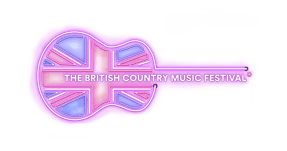
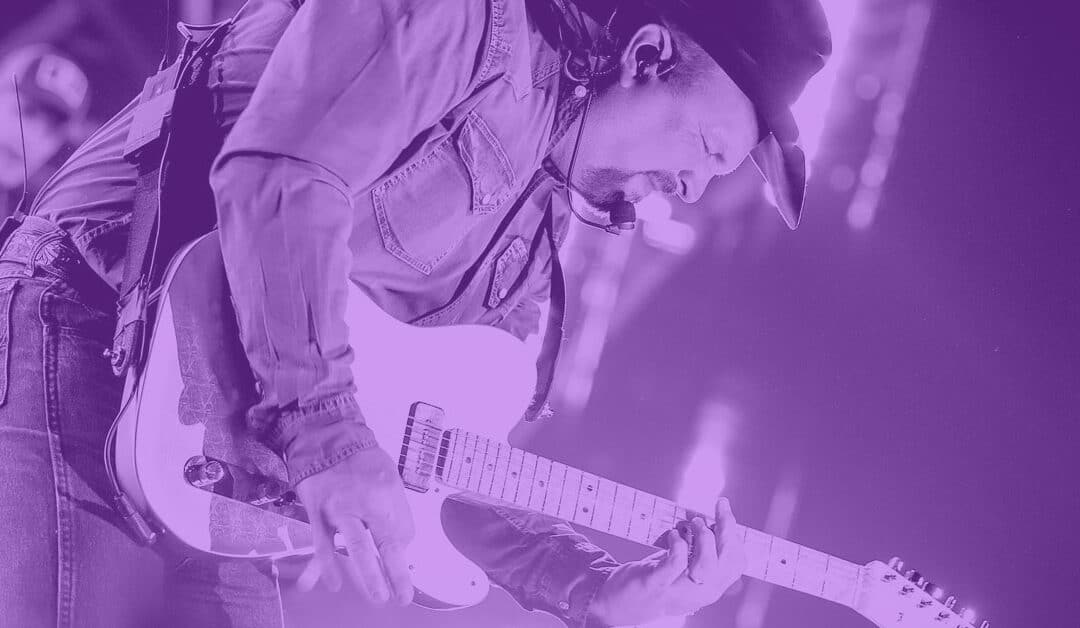
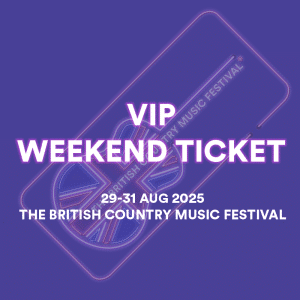
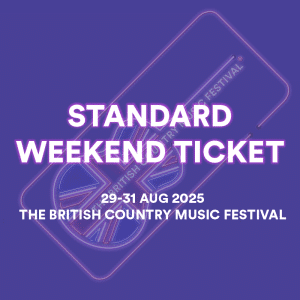
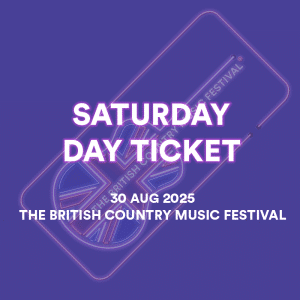
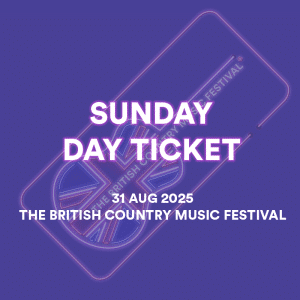
Recent Comments